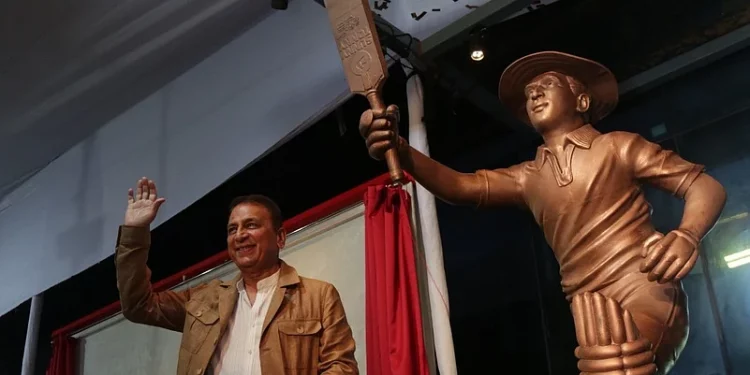When his life-size statue was unveiled at Mumbai’s famous Wankhede Stadium on Saturday, legendary batsman Sunil Gavaskar was overcome and speechless. Alongside the unveiling of the statue of former India captain and former BCCI and ICC president Sharad Pawar, the event marked the opening of the MCA Sharad Pawar Cricket Museum. On September 22, the museum will be available to the public.
Known as one of the best opening batsmen in cricket history, Sunil Gavaskar made history in 1987 when he defeated Pakistan in Ahmedabad to become the first player to reach 10,000 runs in Test cricket. After seeing his life-size statue, Sunil Gavaskar conveyed his feelings and dedicated the accolade to his Mumbai cricket career.
I just don’t know how to express how overwhelmed I am by this exceptional distinction. Not everyone experiences the presence of a statue outside a museum where a lot more people will be visiting. As I’ve said before, the Mumbai Cricket Association is like my mother; it held my hand when I first started playing cricket at the school level for Bombay schools. Additionally, for the Ranji Trophy, etc.
Being allowed to play for Mumbai has been a tremendous honour, a blessing, and a privilege, and I never in a million years imagined that it would get to this point. When asked about the statue, Gavaskar responded, “Yes, it brought back very good memories because it reminded me of that specific moment when that ball was bowled and I reached the 10,000th run.”
As reported by NDTV, Gavaskar told the media, “This is an honour for all those with whom I played cricket in my Bhagirathi (Bai) building (during childhood in Mumbai’s Tardeo), then at the school level, at the club level, in the Ranji Trophy team, and in Test cricket.”
I learnt a great deal from Dadar Union: Sunil Gavaskar
Two of Sunil Gavaskar most treasured caps—one from Mumbai and the other from Dadar Union Sports Club, which he held in particular affection—will also be on display at the museum. He remembered donning that exact cap when Kapil Dev bowled through pain to earn an incredible victory for India in their historic 1981 Test triumph against Australia in Melbourne.
“I learnt a lot from Dadar Union, including the fact that the game is bigger than the player and that you should never take it for granted. You also need to keep giving back to the game.” However, that cap was worn on the day that India defeated Australia in the third Test of the 1980–81 tour by 59 runs, when Kapil (Dev) entered the game in Melbourne and claimed five wickets (5/28).
The day before, he wasn’t feeling well. After receiving painkillers, he proceeded to bowl. “I am superstitious, as you are surely aware by now, so it was touch and go. Fortunately, I had my Dadar Union cap on. They needed to score between 60 and 80 runs before they lost three wickets, which is why I wore that cap that day rather than the India cap,” he continued.







